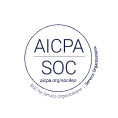
Fast, and certain

Once, design leadership was defined by taste—by those who could spot trends, rally teams, and shape elegant experiences. Those skills remain essential, but the story has shifted: today, design leaders must also deliver on the economics.
With design now sitting in the engine room of business transformation, speed is the new mandate, but it’s also the new trap. When everything accelerates—ideas, iterations, expectations—the true differentiator isn’t creativity or even innovation. It’s efficiency: the ability to move fast with clarity. And the only way to get there is by turning design from an act of intuition into a system of evidence.
Design leaders are in the spotlight (for all the wrong reasons)
Being a design leader today means operating under extraordinary pressure.
Some of the key challenges design leaders face today:
- Stretched teams and shrinking bandwidth. Many organizations are trying to do more with less—expecting small teams to deliver big impact.
- Rising complexity and technical debt. Modern products demand modular components, multiple platforms, accessibility, performance, and integration with ML/AI systems. Each assumption or oversight compounds in downstream cost.
- Stakeholders aren’t aligned on goals. Leaders are surrounded by data showing what users do, but not always the consistent, timely input that explains why experiences succeed or fail. That lack of clarity leaves leaders caught between competing priorities: pushing for speed while protecting quality and alignment.
- Speed over certainty. Business and product leaders expect fast releases; they often deprioritize early validation in favor of momentum and intuition.
Despite these challenges, expectations are higher than ever. And AI has accelerated everything—from ideation to iteration—leaving leaders to answer one daunting question:
How do we move faster without losing clarity, quality, or credibility?
The paradox is this: design has never mattered more, yet has never been under greater scrutiny. When every pixel must prove its worth and every release must justify its cost, the difference between success and stagnation comes down to one factor—design efficiency.
You can be fast, but you can’t be uncertain
Speed is seductive. It looks like progress, sounds like momentum, and feels like success—until uncertainty gets in the way of delivering meaningful outcomes.
Efficiency isn’t about producing more. It’s about deciding better. It’s the art of moving fast because you know where you’re going—not despite it.
But in too many organizations, that clarity quietly erodes.
Teams design in silos. Stakeholders debate direction. Feedback arrives after the launch, when it’s too late to change course without cost or blame.
The data tells a stark story:
- 50% of design teams conduct user research only after designs are finalized (McKinsey), missing critical opportunities to prevent misalignment earlier.
- 30–50% of design time is spent refining or revising existing work, rather than innovating new experiences (DFMPro).
- Post-launch fixes cost up to 100× more than pre-development validation (IBM).
- The software industry collectively loses $2.4 trillion annually to downstream rework and inefficiency (IDC).
"Every endless design cycle signals disorganization. Every post-launch issue signals weak insight. And over time, those signals compound — eroding credibility, influence, and trust."
The issue isn’t speed. It’s uncertainty.
Every day spent guessing what “good” looks like wastes time and burns trust capital. What starts off as a few operational failures end up becoming reputational ones.
AI has only raised the stakes. Automation can generate ideas in seconds, but it can’t tell you which ones are right. When decisions are made on partial data or algorithmic guesswork, design becomes the scapegoat for uncertainty that began upstream.
Why customer insights are the key to design efficiency
The fastest path to design efficiency is through understanding the customer’s perspective, validating ideas early so teams spend less time guessing and more time delivering what customers value.
There’s a lingering myth in design: that validating concepts and designs slows progress. In truth, the opposite is now true. Continuous validation is how high-performing teams move faster with confidence.
By understanding the customer’s perspective early, we can turn design from an art of assumption into a system of learning. By gathering customer insights early and often, teams uncover what works before costly build cycles, reducing rework, aligning decisions faster, and focusing effort where it matters most. That’s efficiency—measured not just in speed, but in clarity of direction.
For today’s design executives, that operational discipline paves the path to strategic leadership. Customer insight becomes the mechanism that lets design leaders:
- Guide discussions with data, not debate.
- Show how design investments drive measurable impact.
- Strengthen credibility with Product, Engineering, and Finance peers.
Continuous customer feedback closes the loop between creativity and performance. It’s how design earns its seat at the table—and proves its value once it’s there.
When customer understanding shapes every design decision, efficiency follows naturally. It’s the bridge between inspired ideas and scalable business results.
How testing directly solves design’s core challenges
Below is a reframing of the challenges design functions typically face—and how testing and validation directly address them:
Challenge | Why it arises | How design efficiency via testing addresses it |
Lack of trust or credibility with stakeholders | Late internal pushback derails work | Tests generate objective data (task success, sentiment, conversion) that design leaders can share and defend. |
Ambiguous and fluid prioritization | Teams debate features, flows, or visual styles | Tests give directional clarity: invest where empirical lift is demonstrated. |
Scope creep / changing requirements | Product gets new asks post-design | Frequent validation ensures that changes are surfaced early and incorporated while cost is low. |
Delayed feedback loops | Testing is confined to usability labs or final QA | Lightweight feedback tools embed feedback into every sprint. |
Design inefficiency / too many cycles | Designers iterate blindly | Tests prune false paths early, concentrating effort on what matters. |
The positive impact to the bottom line is quantifiable, and significant. A Total Economic Impact Study, conducted by Forrester Consulting and commissioned by UserTesting (August 2025), revealed that organizations using the UserTesting® Human Insight Platform achieved a 415% return on investment (ROI) over three years with a payback period of less than six months.
According to the study, a composite organization modeled from six global enterprises across software, finance, e-commerce, consumer packaged goods, and retail realized a net present value (NPV) of $7.6 million over three years by leveraging UserTesting to bring customer insights into its decision-making processes. Among its other findings, the study showed:
- Iteration cycle reduction of 25%. Validation of concepts and designs prelaunch prevents costly iterations, reduces wasted effort, and ensures efficient use of development resources for the composite organization. Over three years, avoided developer rework due to prelaunch testing is worth $2.5 million to the composite organization.
- Researcher times savings of 50% and designer time savings of 10%. Over three years, improved researcher and designer productivity is worth $2.4 million to the composite organization.
- Increased conversion rate of 7.2% due to channel optimization. Insights gained through UserTesting informed strategic design and feature optimization in the digital experience. Over three years, profit from optimized usability is worth $2.1 million to the composite organization.
Beyond pure numbers, design teams report that early validation builds confidence, alignment, and morale. Designers feel less defensive, product partners are less surprised midstream, and stakeholders gradually shift from asking “Why test?” to “When can we validate?”
Building the design efficiency flywheel
Design efficiency is the signal that leadership looks for when evaluating where to invest.
It’s the visible evidence that design is not only creative, but accountable—that it can deliver clarity, velocity, and measurable business value.
For design executives, this combination is transformational. It’s how design shifts from “nice-to-have” to non-negotiable in product and business strategy discussions.
To operationalize efficiency, design leaders must build what can be called the Design Efficiency Flywheel—a virtuous cycle that links clarity, speed, and influence into a repeatable growth loop.
Flywheel Stage | Leadership Focus | Business Impact |
Visibility | Quantify design’s impact through shared metrics and customer insight. | Creates transparency and trust with executive peers. |
Velocity | Embed rapid, continuous validation into sprints and decision checkpoints. | Reduces wasted effort, accelerates release cycles. |
Credibility | Demonstrate the ROI of design through measurable outcomes. | Strengthens design’s influence in budget and roadmap decisions. |
Investment | Use data-backed performance to advocate for resources and expansion. | Establishes design as a strategic lever for growth. |
Each stage reinforces the next.
The more clarity teams gain through testing, the faster they move. The faster they move, the more measurable their success becomes. The more measurable their success, the more organizational confidence—and investment—design earns.
What leaders can do to enable the shift
For design leaders to successfully anchor the design efficiency mindset, they must act in four domains:
1. Governance and adoption
- Sponsor a “validate-first” manifesto or charter to align with product, engineering, and executive leadership.
- Embed testing requirements into design review and deployment processes (e.g. a design milestone can’t pass unless at least one test has been run).
2. Tooling and infrastructure
- Provide designers with self-serve access to modern usability platforms, remote panels, and AI-assisted analytics.
- Integrate validation and insights gathering hooks into prototypes, design systems, and dev handoff tools to reduce friction.
- Implement dashboards or repositories of test results—visible across design, product, and engineering.
3. Skill building and culture shift
- Train designers in rapid-test techniques, hypothesis framing, and lightweight experiment design.
- Encourage “failure post-mortems” where the question is, “What did we learn?” rather than “Who’s to blame?”
- Celebrate and amplify “insight-wins”—cases where a seemingly small test prevented a big rework meltdown.
4. Measurement and ROI tracking
- Track metrics like % of features shipped without major redesign, rework cycles per launch, test-to-launch ratio, and time-to-iteration.
- Tie design health metrics to business outcomes (e.g. design-led conversion lift, retention, NPS) to strengthen executive buy-in.
By aligning policy, tooling, culture, and measurement, leaders can make the paradigm shift stick—and not let it regress into novelty.
Final Thought: From intuition to influence
Design leadership is entering a new era.
The next generation of design executives will be defined not by how much they create, but by how effectively they connect design to business outcomes.
They’ll be judged by metrics like:
- Time to validated decision
- Design-to-launch velocity
- Customer satisfaction or conversion tied to design decisions
- Reduction in wasted cycles
Speed without clarity is risk. Speed with evidence is influence.
When design runs on insight, it becomes the most efficient, strategic, and credible engine in the business.
Related Links
ON-DEMAND WEBINAR: Measuring the value of your design team’s research and insights—discover how leading design teams measure and prove the real business value of their research and insights—and learn practical ways to tie design impact directly to customer experience and ROI.
GUIDE: How to enhance design efficiency through continuous user feedback—see how continuous user feedback can streamline every stage of your design process—helping teams move faster, reduce risk, and build experiences customers love.
BLOG: Stop shipping guesswork: How prelaunch testing cut 25% of iterations—learn how prelaunch testing helps design teams eliminate costly rework, speed up iteration, and ship smarter by replacing guesswork with real user insight.
BLOG: Beyond the pixel: how design metrics drive better decisions—see how leading teams use UX design metrics to cut rework, boost efficiency, and ship high-confidence experiences that drive real business impact.
PODCAST: Effectiveness vs. efficiency in design with Alastair Simpson—Dropbox’s VP of Design Alastair Simpson explains why prioritizing effectiveness over efficiency leads to stronger teams, better products, and more meaningful outcomes across your entire organization.






